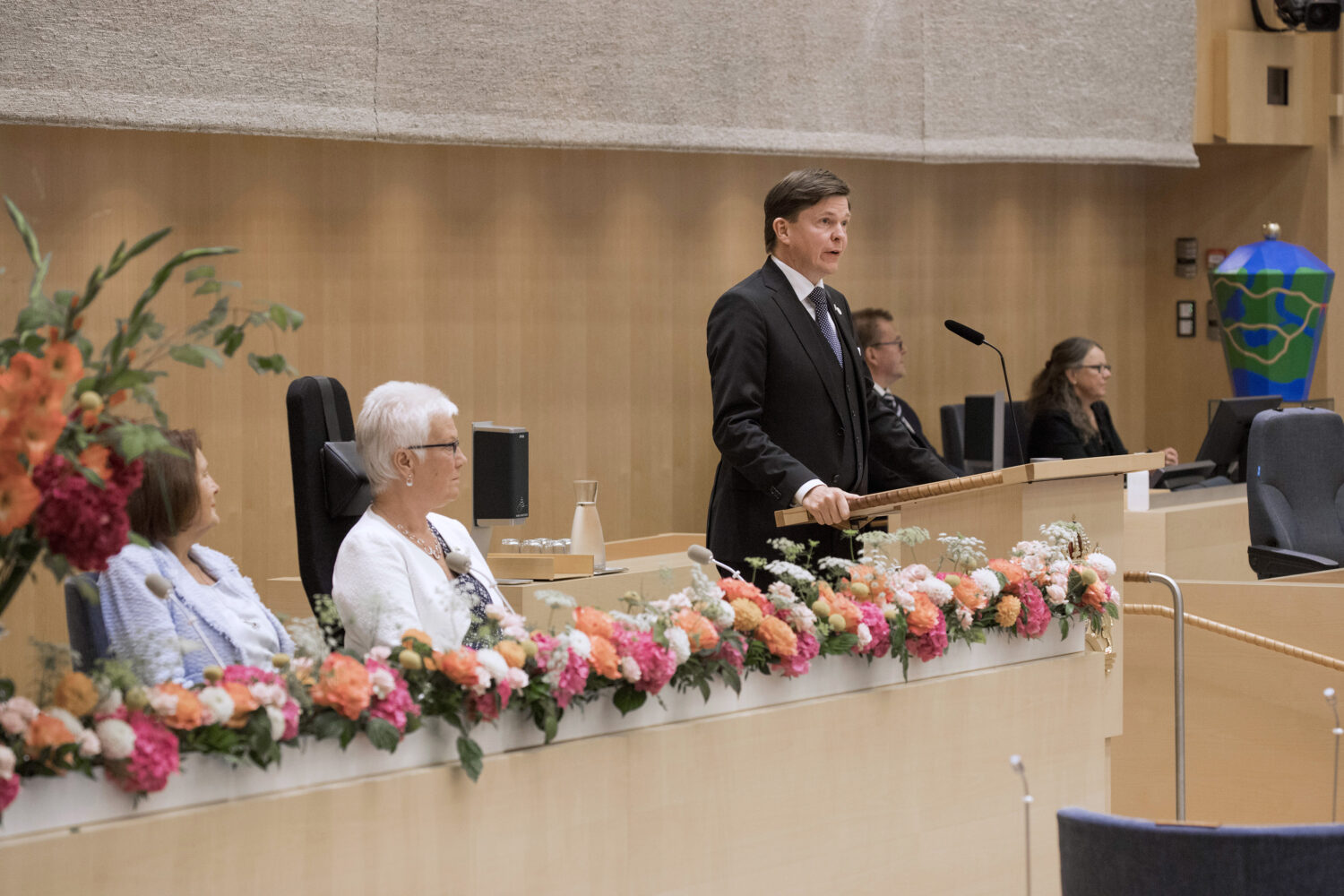

Tormod Otter Johansen
Researcher at the Law Department
University of Gothenburg
My paper aims at exploring the symbolic aspects of the Swedish state through a case study of the Swedish parliament, the Riksdag and its main ceremonial practices as well as their architectural and material symbolic framing.
The modern Swedish state is a peculiar beast, both seen and self-identified as a modern, rational, and secular institution with the welfare state of the 20th century as its crowning achievement. But it is also one of the remaining constitutional monarchies with a significant symbolic and cultural capital tied to the royal family and the historical provinces with characteristics defined during the national romantic era. The archaic symbols of national romanticism, hereditary power, and a history of warfare and regional domination are in Sweden combined with a specific strand of modernity in the social-democratic project, industrial achievements, gender equality, sexual liberation, scientific prowess, and late 20th century developments like multiculturalism.
The Riksdag is the primary focal point of this complicated backdrop. In both architectural and ceremonial structure, the building and the activities in it relate directly to the conjunction between the modern and archaic elements of the Swedish state and its both formal and material constitution. This is apparent both in everyday parliamentary business and not least in the ceremonious opening of the parliamentary year.
When the Riksdag gathers every September, the Speaker of the Riksdag welcomes the King and his family who arrive in gilded wagons from the Royal Palace. The Speaker accompanies them to the Assembly hall, on the way encountering representatives from all provinces clad in folk costume holding flags and playing folk music. The Assembly hall is decorated with a sober birch veneer, the material that covers most surfaces in public agencies in Sweden. The wall behind the Speaker features the artwork “Memories of a Landscape” woven with linen threads from every province of Sweden. It is flanked by a Swedish flag and a decorated ballot box also representing abstract landscapes with water, land, and roads.
Many important details are found in the ceremonial forms of parliamentary business. When the King enters the Assembly hall, the members of the Riksdag and the audience stands. After that “The King’s Song” is sung, before the national anthem. On ordinary days the Speaker faces the members and bows when entering the chamber. All these ceremonial forms together form what a secular liturgy of the public and political institution.
My interest in studying this secular liturgy of the Swedish parliament relates to my public law perspective and connects to the meaning these symbolic aspects hold in relation to Swedish constitutional history.
Some studies focusing on the physical and symbolic staging of the juridical have been conducted in Sweden, particularly focused on criminal law and procedure. However, within Swedish public law, remarkably little interest has been shown to the symbolic practices of major public institutions.
In international research Philip Manow’s In the King’s Shadow: The Political Anatomy of Democratic Representation (2008) stands out as closely related to the theme I am focused on in this project. Manow compares, among other things, the placement of members in different parliaments and links this to the symbolic transfer of the monarch’s body into the democratic paradigm.
Giorgio Agamben has asked the curious question: “Why does power need glory?” (Agamben The Kingdom and the Glory 2011) This question, which Agamben addresses through a genealogical study connecting glory to the economy of power and its theological roots in the West, seems particularly pertinent in the case of Sweden. While the few details I have described above exposes the ceremonial nature of the exercise of power, the self-image of Sweden is still a secularized, rational, and common sense based form of political society. What form do the ceremonies of power take in a society that has rejected the explicit glorification of its power? The subdued tones of birch veneer seem to act as a more forceful glorification of the supposedly humble Swedish nation than marble columns or soldiers standing at attention would.